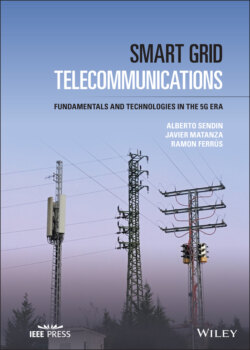Читать книгу Smart Grid Telecommunications - Ramon Ferrús - Страница 27
1.2.2.2.2 Transmission and Distribution Regulation
ОглавлениеElectric network infrastructures require large investments spread through the territories they serve and are bound to the physical space where they are located. From an intuitive perspective, it would most likely not be efficient to have two competing electricity grids in the same area providing the same service. From the analysis of real practices, the widest accepted reality is that Transmission and Distribution activities are natural monopolies and, as such, are closely regulated.
If technical details are analyzed, the conclusions become evident. Transmission and Distribution parts of the grid are characterized by different aspects leading to the efficiency of a single infrastructure to provide the service. First, the duplication of Transmission or Distribution grids is not affordable in terms of cost, land use, and environmental impact. Second, in the case of the Transmission grid, the unit cost of transmitting electricity (cost of 1 km of line per unit of transmission capacity) declines abruptly with a line's total transmission capacity, involving that a single element performs better than two. Third, the essentiality of the service in a territory, the operation of the network as a whole, the prevention of market control scenarios, and the technical design constraints advocate for this monopoly type of regulation.
However, Transmission and Distribution grids are different among them. Each one has a different impact and complexity within an electric power system and do pose a different burden and risk to the utility operating it. Thus, the way in which they are regulated should be different:
Transmission networks have a huge impact in wholesale markets, and regulation should focus on their proper performance.
Distribution networks are the origin of over 90% of end‐consumers outages, and regulation should bear in mind the quality of supply.
While Transmission infrastructure is relatively standard and can be audited and controlled easily, Distribution grid differs greatly among territories and its assets are widespread. Thus, Distribution requires much more simplified procedures to calculate remuneration (compared to Transmission), typically incentive‐based.
The economic characteristics of Transmission networks are associated to investments. This statement is comprehensive of operation and maintenance costs, as they are proportional to the investment. Relatively speaking, the economic weight of Transmission networks with respect to all activities involved in the electric power system is significantly lower than Generation and Distribution, and it is typically between 5 and 10% of the total cost of electricity.
As with Transmission network, Distribution networks' costs include the investment needed to strengthen the existing grid and build new facilities to expand it. The cost components also include the obvious operation and maintenance activity, energy losses costs, and those of auxiliary activities such as meter reading and billing for network services. It is important to mention that Distribution network charges are generally separated into connection charges and use‐of‐system charges. The former is a single payment when a new connection (or upgrade in the existing connection) is required, and the latter are the periodic payments made by network users to cover the total cost of the regulated service.
All in all, Transmission and Distribution electric utilities have the need and the opportunity to invest heavily in their networks, as long as that is justified, and approved by Regulators. Then, they can translate these investments in long‐term recognized costs that will be part of the service tariffs.
A final note on this cannot miss the point that the emergence of the new developments in power systems (DG/DER/DR‐including Distributed Storage or DS, EVs, Demand‐Side Management [DSM], etc.) is challenging the technical status quo of electricity business structure and may ultimately motivate the appearance of new regulatory models that may adapt better to the new situation. However, present‐day grid evolutionary needs must be addressed within the current scenario. A smart regulatory design and implementation will be required to guide financial resources to support Smart Grids.
